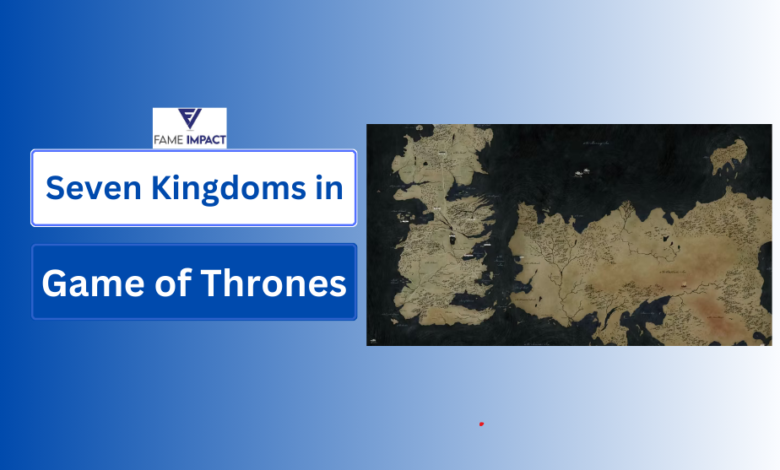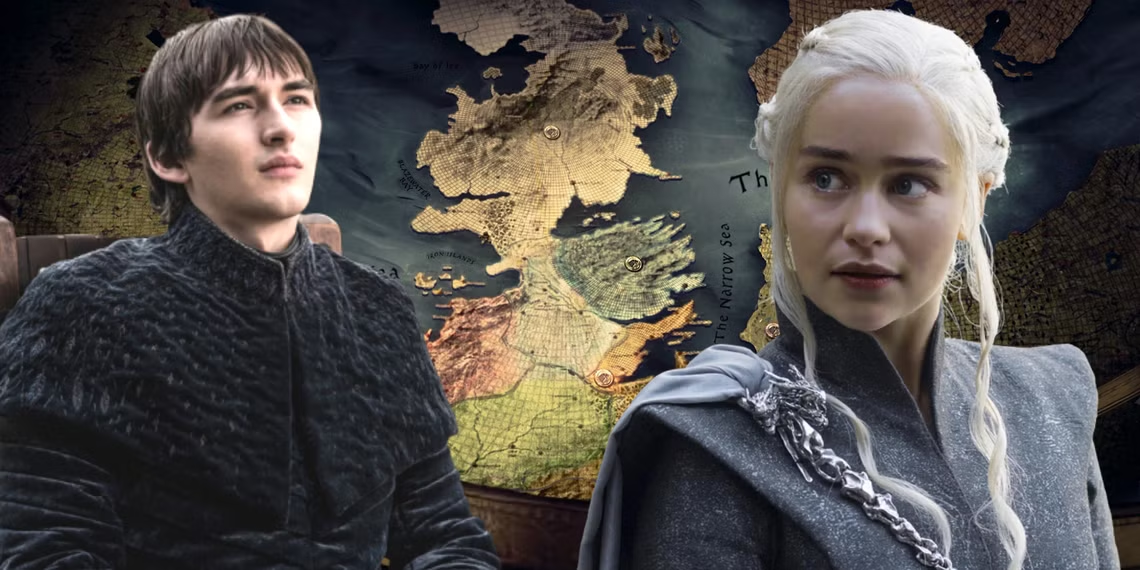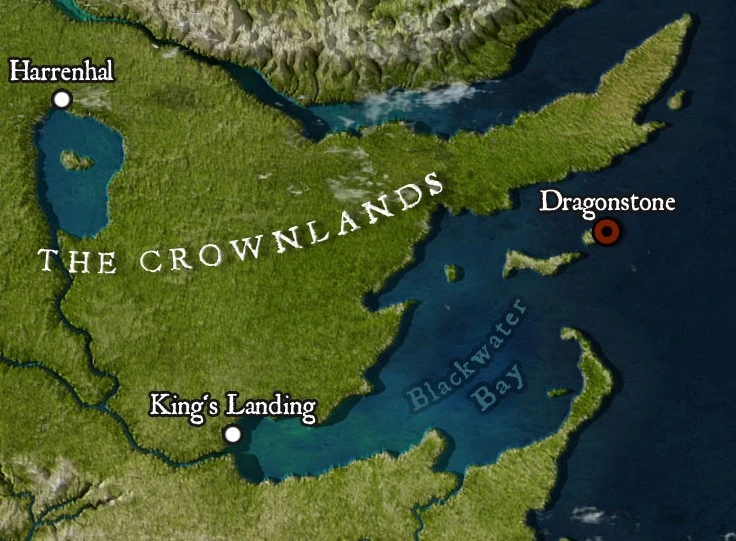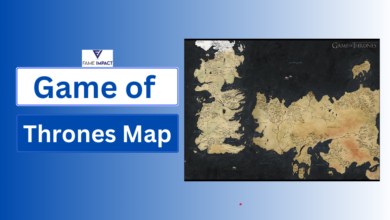What Are the Seven Kingdoms in Game of Thrones? Full Guide

Introduction: Seven Kingdoms in Game of Thrones
The epic saga of Game of Thrones, created by George R.R. Martin, is renowned for its intricate plotlines, diverse characters, and rich world-building. One of the most captivating aspects of this universe is the political and territorial structure of its world, primarily centered around the Seven Kingdoms.
While the title suggests there are only seven kingdoms, the reality is more complex, with a myriad of regions, cultures, and histories interwoven into the tapestry of Westeros. In this comprehensive guide, we will delve into the Seven Kingdoms of Game of Thrones, exploring their significance, geography, culture, and the intricate relationships that define them.
The Historical Context of the Seven Kingdoms

The Origin of the Seven Kingdoms
The Seven Kingdoms were not always united. Originally, the realm was made up of several independent kingdoms. The unification of these kingdoms began with Aegon the Conqueror, who, along with his sister-wives Visenya and Rhaenys, initiated the Targaryen conquest of Westeros. Aegon sought to bring peace to the chaotic land, leading to the establishment of the Iron Throne, which symbolized his authority over the newly formed realm. For a visual representation of this unification, you can explore the Game of Thrones Map.
The Conquered Kingdoms
When Aegon the Conqueror unified the kingdoms, he effectively merged the following realms into what would become known as the Seven Kingdoms:
- The North
- The Vale of Arryn
- The Westerlands
- The Reach
- The Stormlands
- Dorne
- The Crownlands
Despite this merger, the region known as the Iron Islands and the Riverlands are often mentioned alongside the Seven Kingdoms due to their significance and influence in the realm.
Overview of Each Kingdom
1. The North
Geography and Culture
The North is the largest of the Seven Kingdoms, characterized by its cold climate and sprawling landscapes, including vast forests and the frozen expanse of the Wall. Its capital, Winterfell, is home to House Stark, known for their honor and strong familial bonds.
Key Features
- House Stark: The ruling house, symbolized by the direwolf.
- The Wall: A massive ice structure guarding against threats from the north, including White Walkers and wildlings.
- Notable Regions: The Wolfswood, the Flayed Man of House Bolton, and the Haunted Forest.
2. The Vale of Arryn
Geography and Culture
The Vale is a mountainous region known for its impregnable castle, the Eyrie, which sits atop a towering cliff. This kingdom is ruled by House Arryn, and its inhabitants are known for their pride and martial prowess.
Key Features
- House Arryn: The ruling house, represented by a white falcon and moon.
- The Eyrie: A castle with a unique feature of a moon door that leads to the cliffs.
- Notable Regions: The Fingers, a series of islands and peninsulas along the coast.
3. The Westerlands

Geography and Culture
Located in the western part of Westeros, the Westerlands are rich in gold and resources, making them one of the wealthiest kingdoms. House Lannister, known for their cunning and ambition, rules this region from Casterly Rock.
Key Features
- House Lannister: Symbolized by a golden lion, known for their wealth and influence.
- Casterly Rock: The ancestral seat of House Lannister, located on a rocky promontory overlooking the Sunset Sea.
- Notable Regions: The Goldroad, a vital trade route that enhances the wealth of the region.
4. The Reach
Geography and Culture
The Reach is a fertile land known for its agriculture and chivalric culture. House Tyrell rules from Highgarden, and the region is famous for its bountiful harvests and beautiful gardens.
Key Features
- House Tyrell: Represented by a golden rose, known for their alliances and political maneuvering.
- Highgarden: A magnificent castle adorned with extensive gardens and greenery.
- Notable Regions: The Arbor, renowned for producing the finest wines in Westeros.
5. The Stormlands
Geography and Culture
The Stormlands, as the name suggests, are frequently subjected to storms, making the terrain rugged and the people resilient. House Baratheon, known for their strength and determination, rules this kingdom from Storm’s End.
Key Features
- House Baratheon: Symbolized by a crowned stag, known for their prowess in battle.
- Storm’s End: A formidable castle that has withstood the test of time and nature.
- Notable Regions: The Rainwood, a dense forest that provides cover for various wildlife.
6. Dorne
Geography and Culture
Dorne is known for its hot climate and distinct cultural practices, setting it apart from the other kingdoms. House Martell rules from Sunspear, and the people of Dorne are known for their fierce independence and unique customs.
Key Features
- House Martell: Represented by a gold sun pierced by a spear, known for their resistance to outside influence.
- Sunspear: The capital city, known for its heat and unique architecture.
- Notable Regions: The Water Gardens, a luxurious palace featuring pools and lush greenery.
7. The Crownlands

Geography and Culture
The Crownlands surround the capital city of King’s Landing, where the Iron Throne resides. This region is directly ruled by the king and is often the center of political intrigue.
Key Features
- King’s Landing: The bustling capital city known for its political machinations and diverse populace.
- House Targaryen: The ruling house during much of the series, known for their dragons and fiery temperament.
- Notable Regions: Dragonstone, the ancestral seat of House Targaryen, is situated on an island off the coast.
The Interconnectedness of the Kingdoms
Political Dynamics
The Seven Kingdoms are bound together by complex alliances, rivalries, and historical grievances. The politics of Westeros are marked by shifting loyalties, betrayals, and power struggles, with various houses vying for control over the Iron Throne.
Notable Alliances and Rivalries
- The Stark-Lannister Conflict: The animosity between House Stark and House Lannister is a central theme in Game of Thrones, rooted in historical grievances and personal vendettas.
- The Targaryen Restoration: The efforts to reclaim the Iron Throne by House Targaryen, particularly through Daenerys Targaryen, create a ripple effect across the kingdoms.
Cultural Diversity and Traditions
Each kingdom boasts its unique customs, traditions, and cultural practices, enriching the world of Game of Thrones. From the chivalric values of the Reach to the fierce independence of Dorne, these differences shape the identities of the regions.
Festivals and Celebrations
- The Harvest Festival: Celebrated in the Reach, showcasing agricultural abundance and community gatherings.
- The Day of the Dead: A tradition in Dorne honoring ancestors and celebrating life.
Conclusion
The Seven Kingdoms in Game of Thrones offer a rich and complex landscape filled with history, culture, and political intrigue. Understanding what the Seven Kingdoms are is essential to grasping the depth of the series and its characters. Each kingdom, from the icy expanse of the North to the sun-soaked shores of Dorne, contributes to the vibrant tapestry of Westeros. The intricate relationships, alliances, and rivalries between these kingdoms not only drive the plot but also reflect the complexities of power, loyalty, and identity in a world fraught with conflict.
As we explore the intricacies of the Seven Kingdoms, it becomes clear that they are more than just geographical entities; they represent the struggles and triumphs of their people, each with its unique narrative woven into the overarching tale of Game of Thrones. Whether you are a longtime fan or new to the series, understanding the Seven Kingdoms enhances the appreciation of the epic saga and its enduring legacy in the world of fantasy storytelling.


